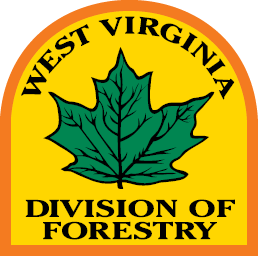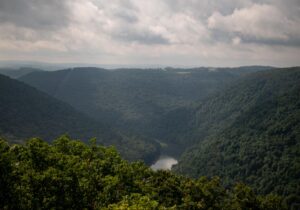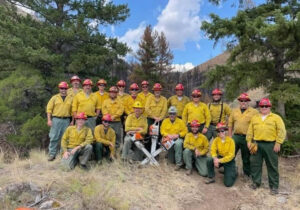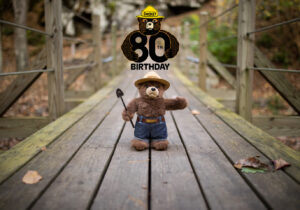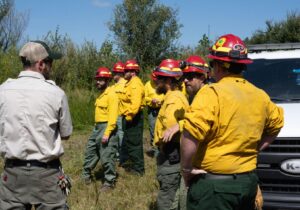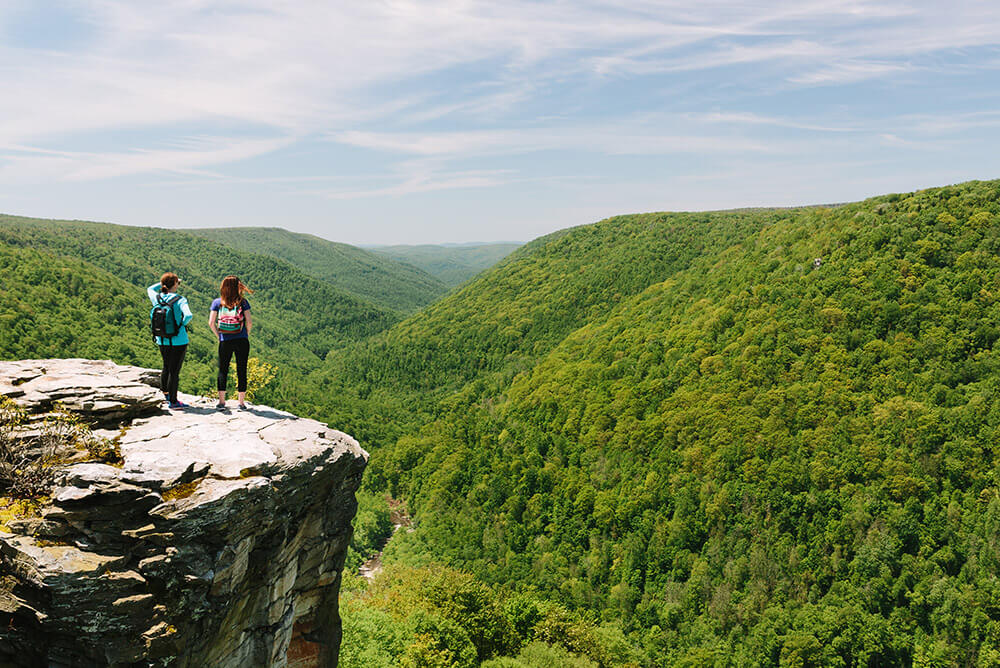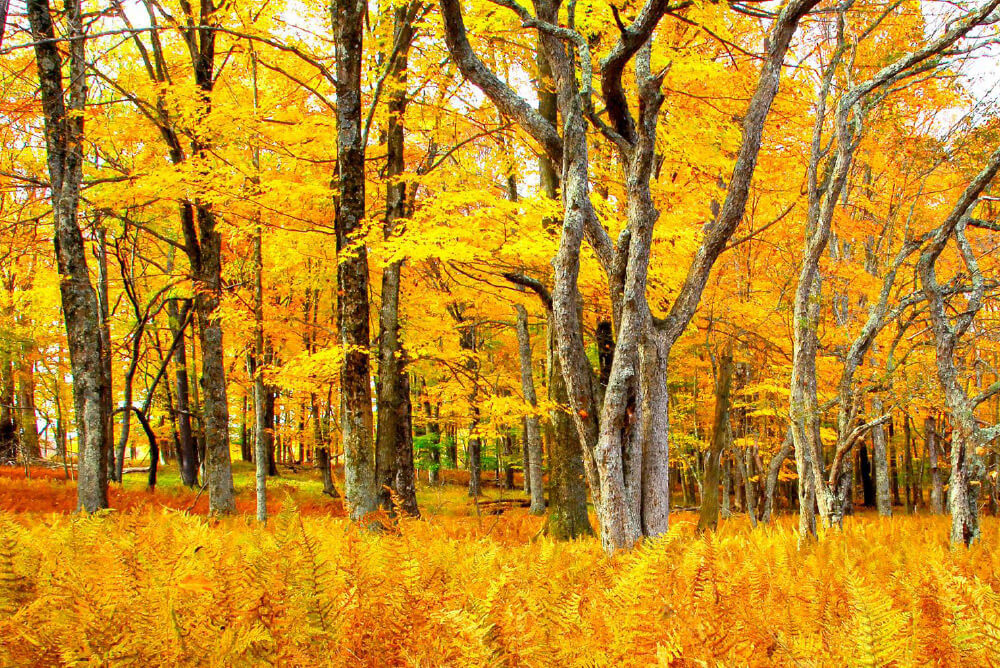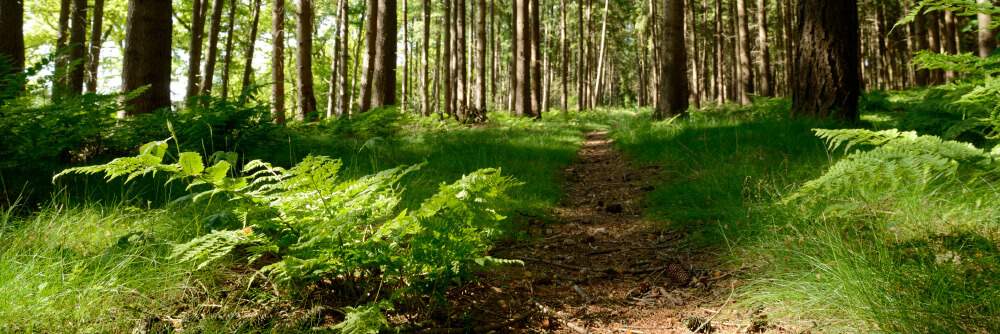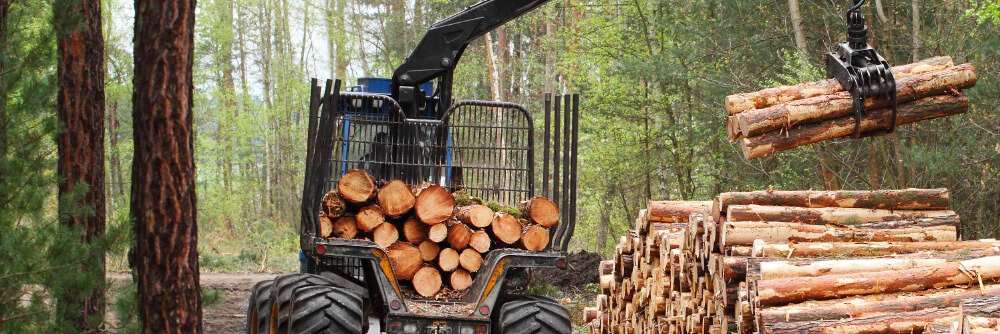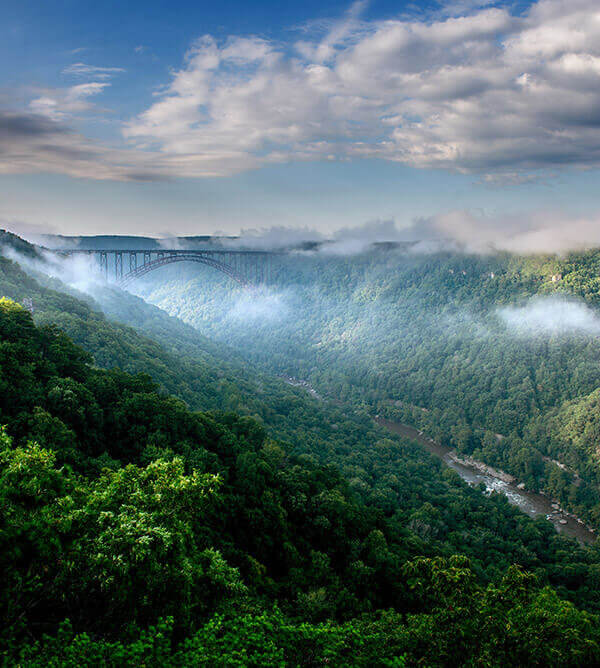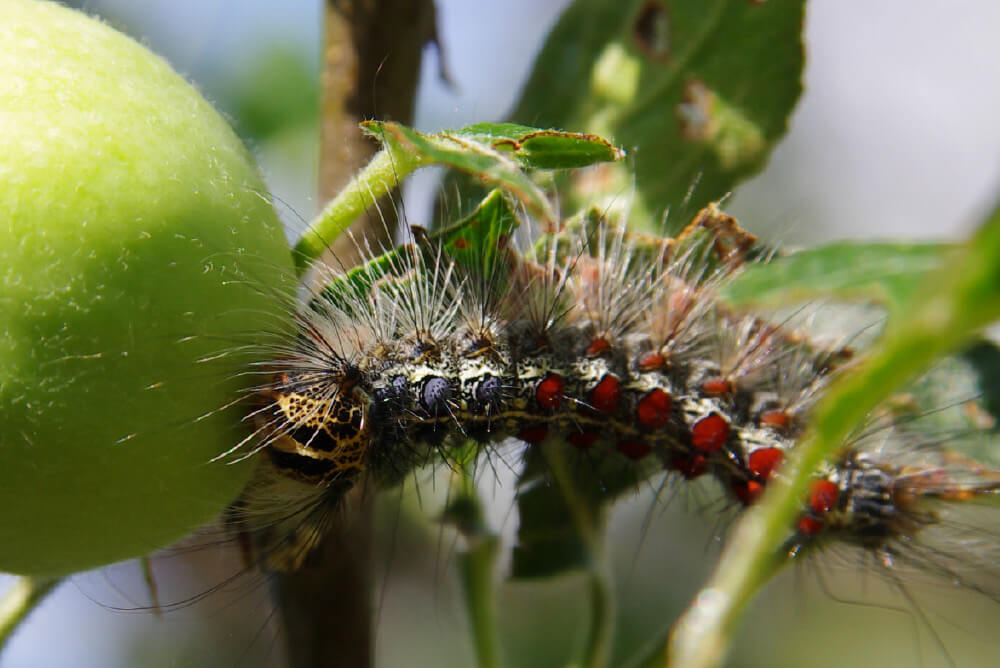Picture a nature-made fireplace buried deep inside a mountain, lit by gently flickering flames that may burn for years – even decades – before the fire burns itself out.
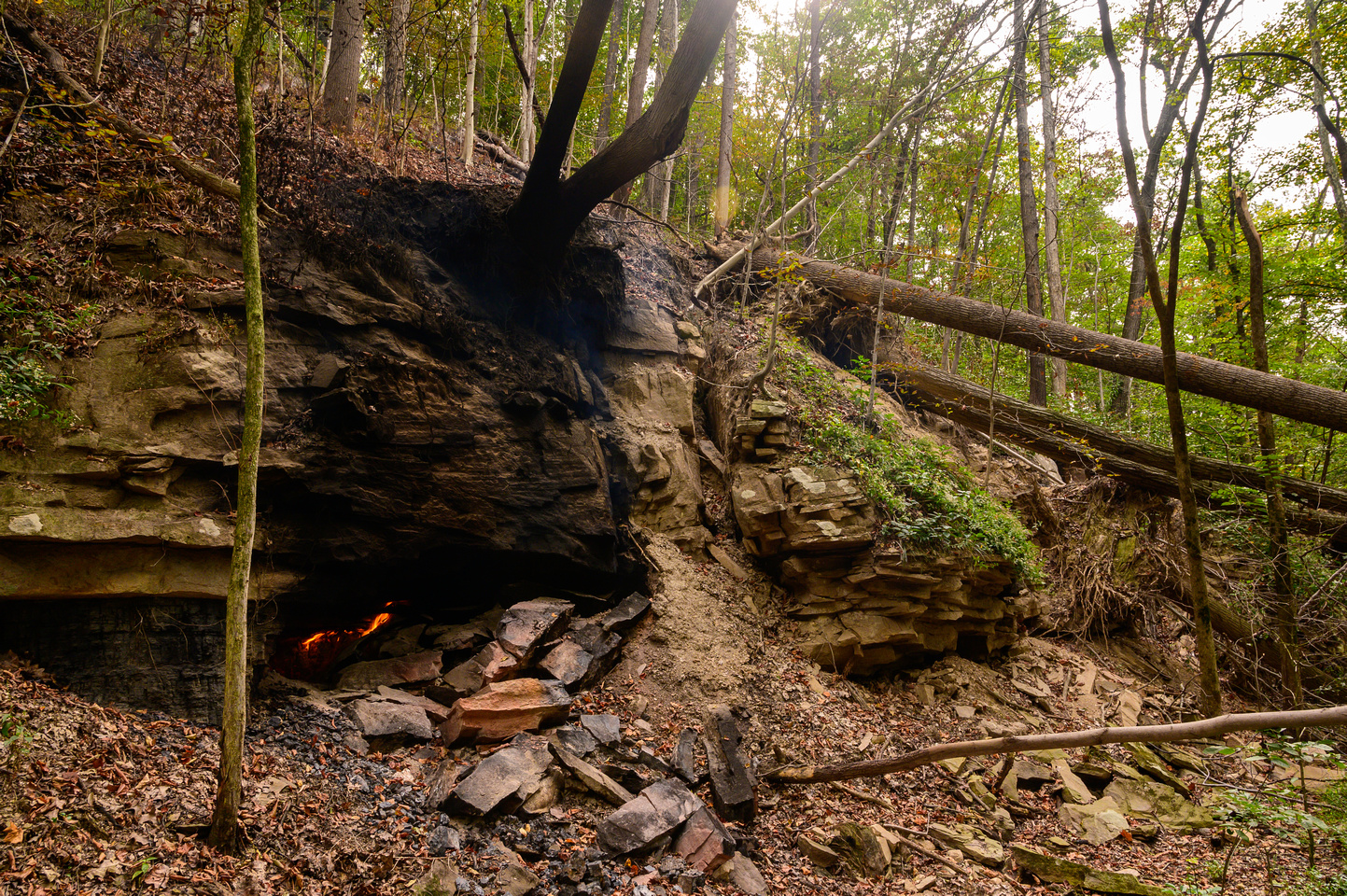
Charred hillside
Assistant Regional Forester Anthony Evans stands before a blackened area in the hillside where one such fire burns.
“The vents allow in oxygen and it keeps burning until all the coal is gone,†he says, gesturing to the tendrils of smoke seeping from the ground higher up the hill.
This coal seam fire in Logan County is one of hundreds throughout the state that will continue to burn quietly for years – and the West Virginia Division of Forestry is tasked with monitoring these fires to make sure they don’t spread into the woods.
What is a coal seam fire?
Coal seam fires occur when a forest fire burns into an exposed coal seam. The fire continues its path deep inside the mountain, where it continues to burn until it runs out of fuel – in this case, coal.
The burning seam in Logan County is the result of a forest fire that occurred there in the spring of 2018, but many fires having been burning much longer. In neighboring Boone County, an 8-mile section of ridgeline is spotted with mine breaks where smoke can be seen drifting out. Locals refer to it as Burning Ridge.
“On a cold day you can see smoke coming out at five different levels where the coal seams are,†Evans says. “It’s been burning since I’ve been here, and I’ve been with Forestry nearly 30 years.â€
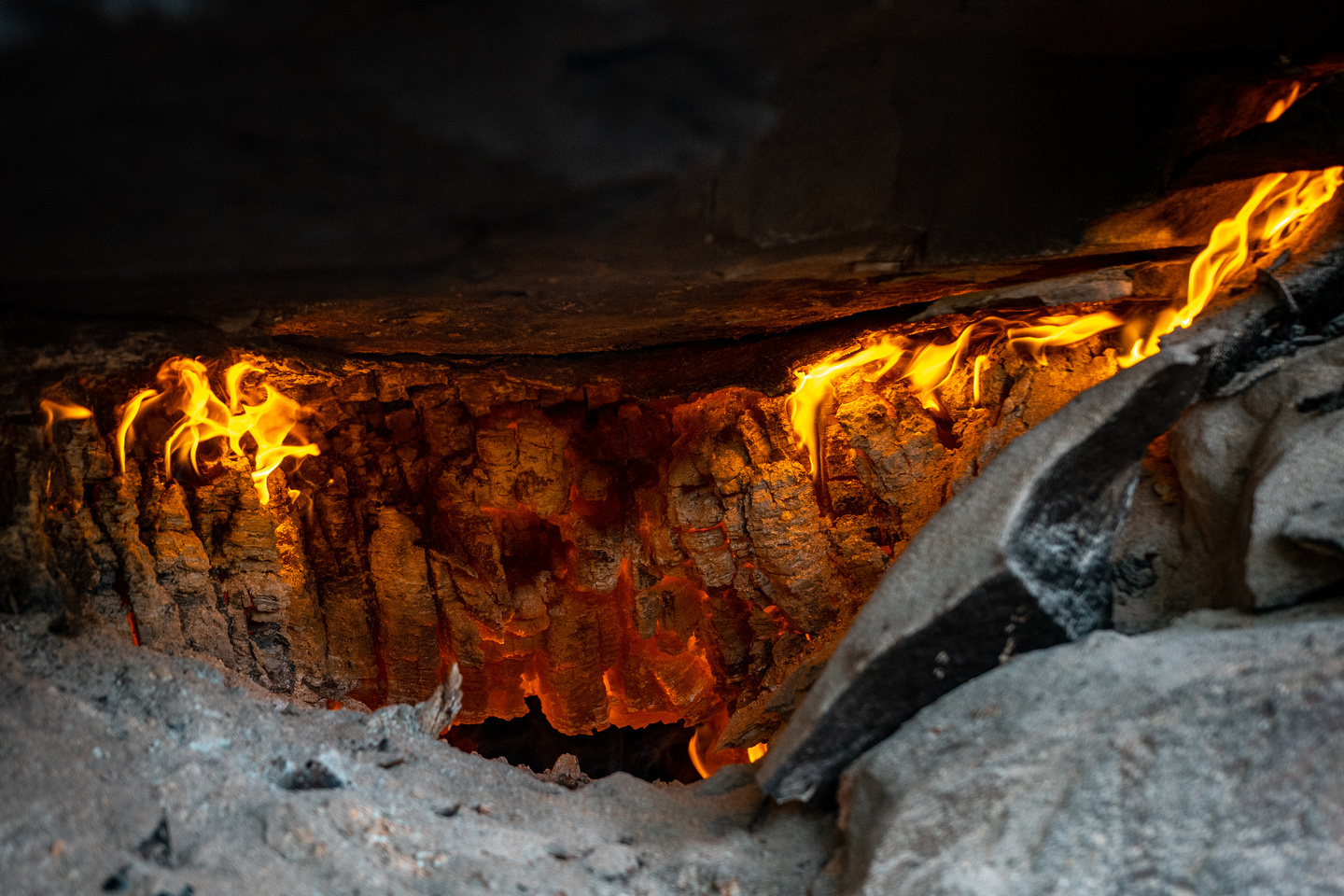
Active coal seam burning
What to do about them
State code requires landowners to maintain a safety strip around the burning area. Typically, this consists of a road cut through the woods to allow firefighters access to the area and a location to construct a fire line if it escapes into the forest.
The state allows coal seam fires to burn because it’s more cost-effective than trying to extinguish them, which would require bringing in excavators and cutting far back into the hillside.
“It’s cheaper to control and monitor these fires than to spend millions to get rid of one,†Evans says. “The fire will burn itself out once the coal is gone.â€
In other instances, like the fires on Burning Ridge, it’s not safe to send fire crews out because the ground could collapse beneath them.
“In this area we don’t put fire crews out because of the mine breaks. It’s too dangerous. So we have to use roads as control lines instead.â€
If you spot a burning coal seam, contact your regional forester’s office so that foresters can go inspect it and record its location.
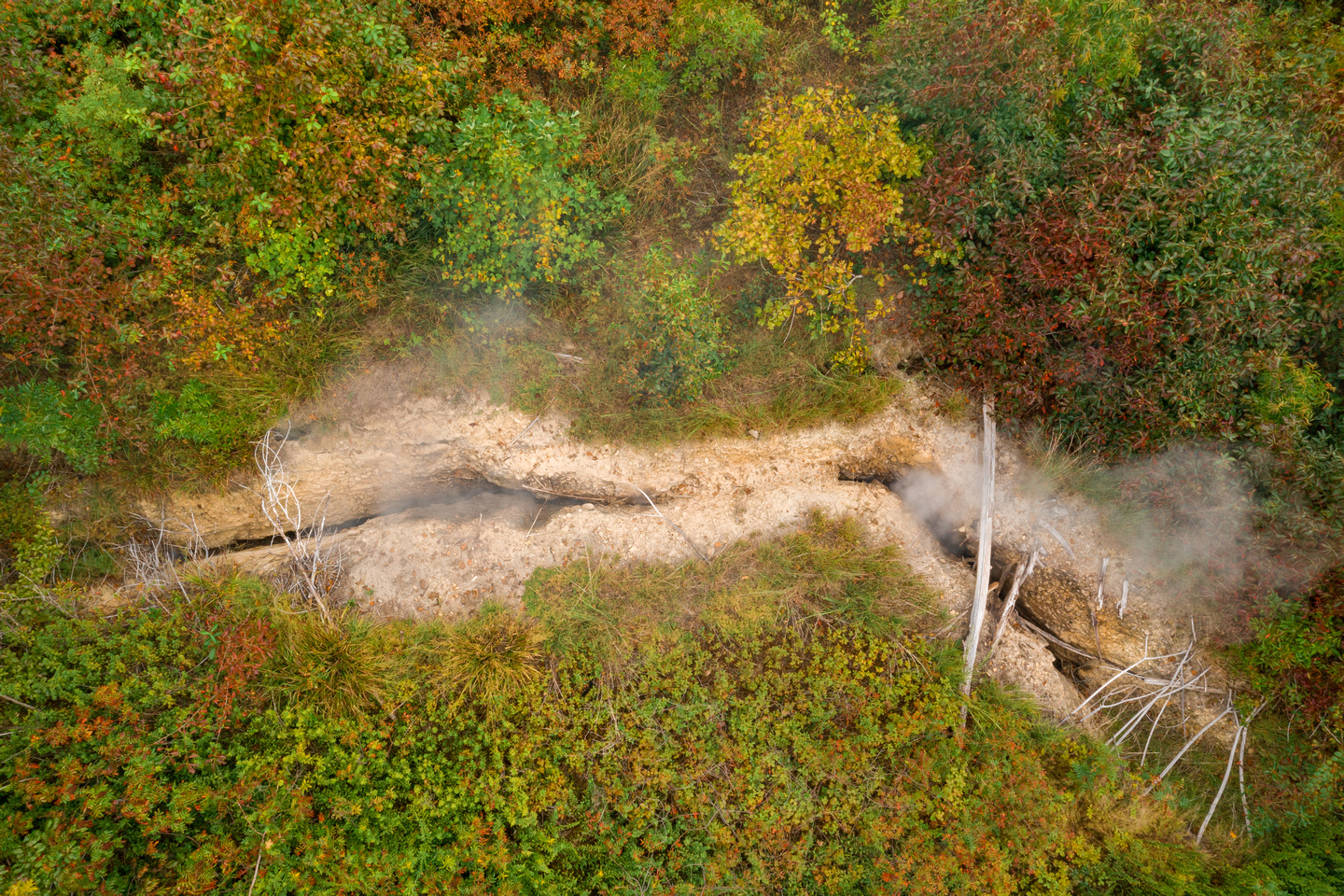
Smoke coming from a seam
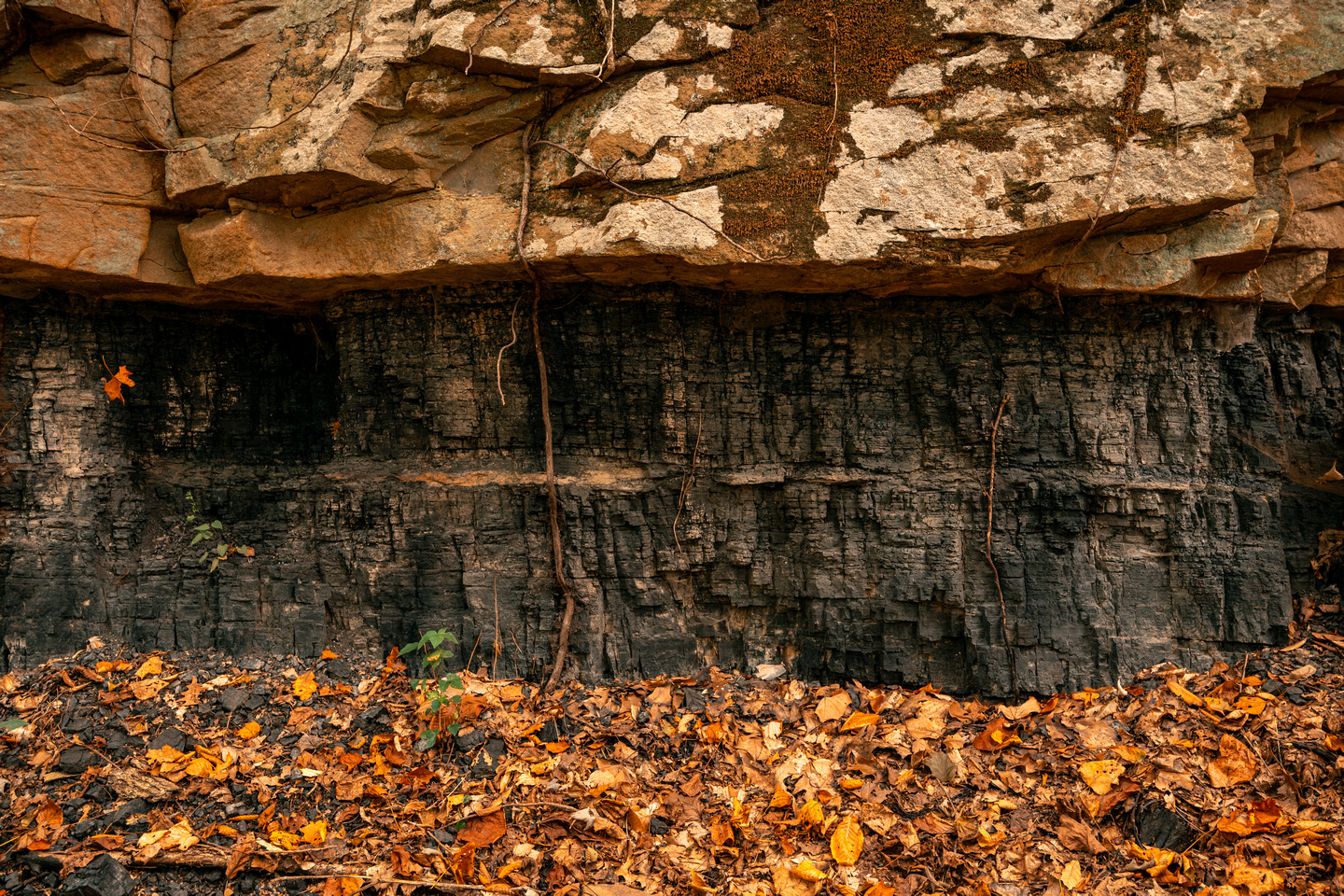
Coal seam – unburned
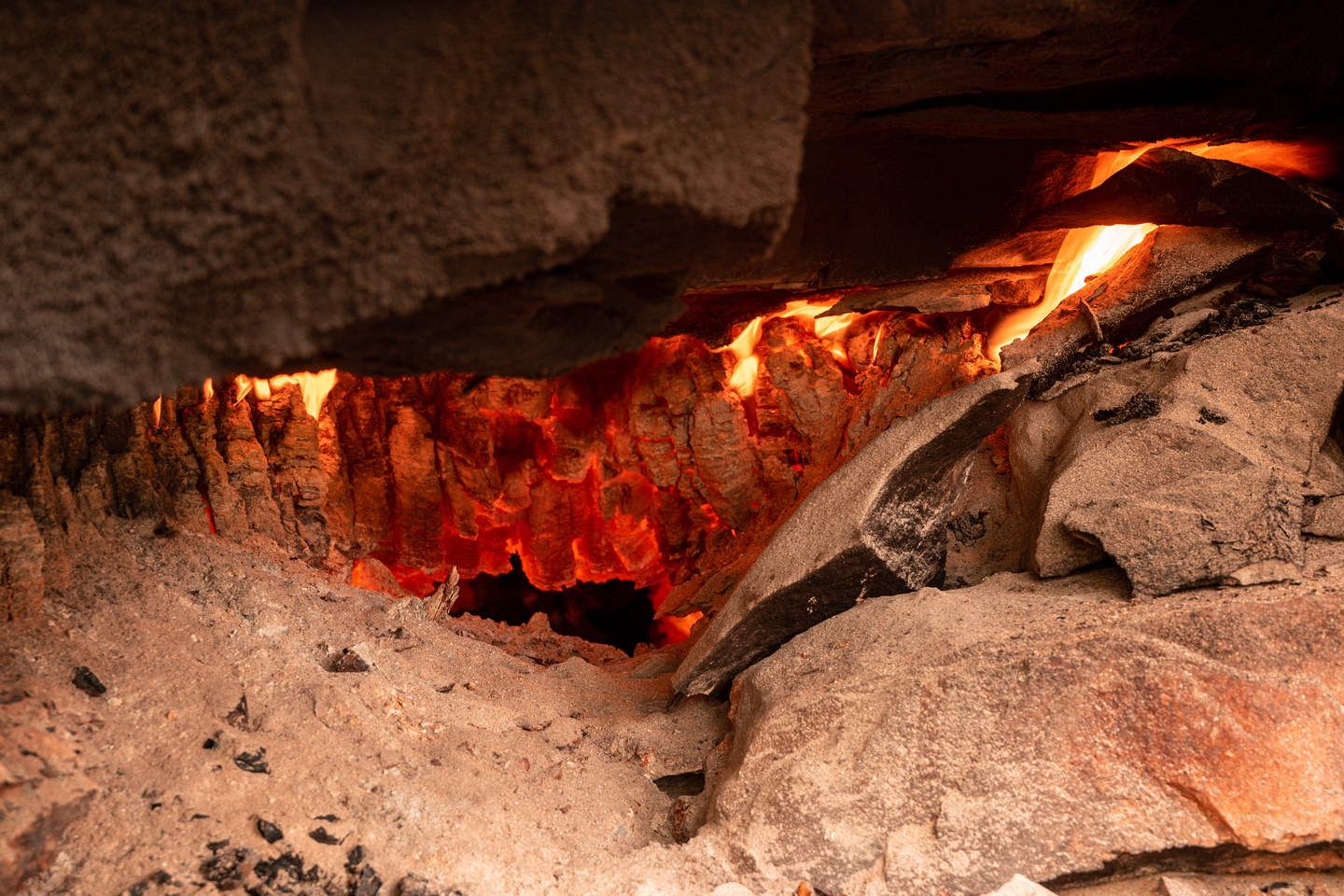
Active coal seam burning
